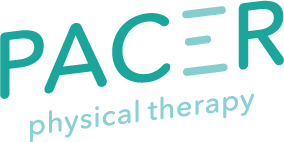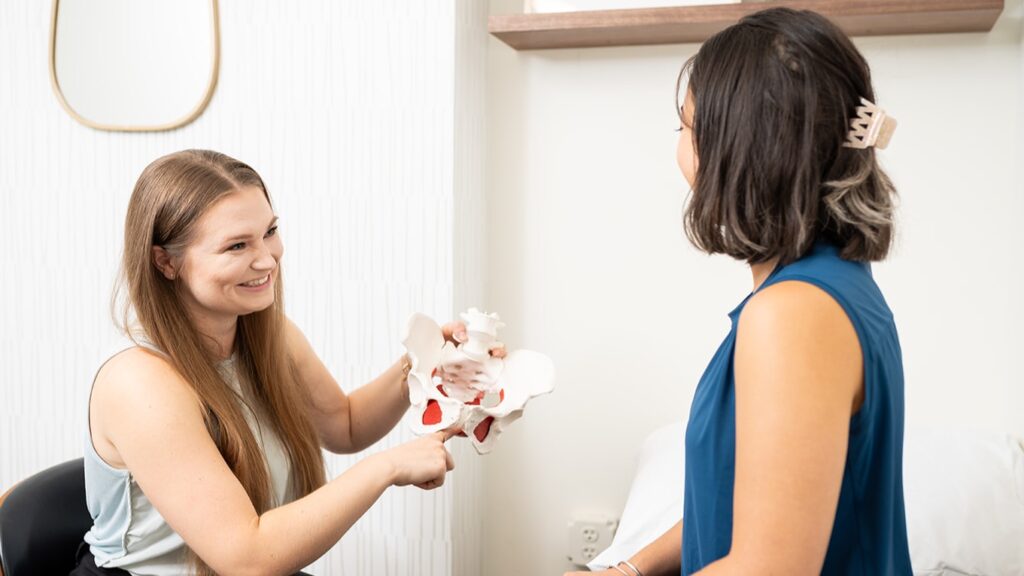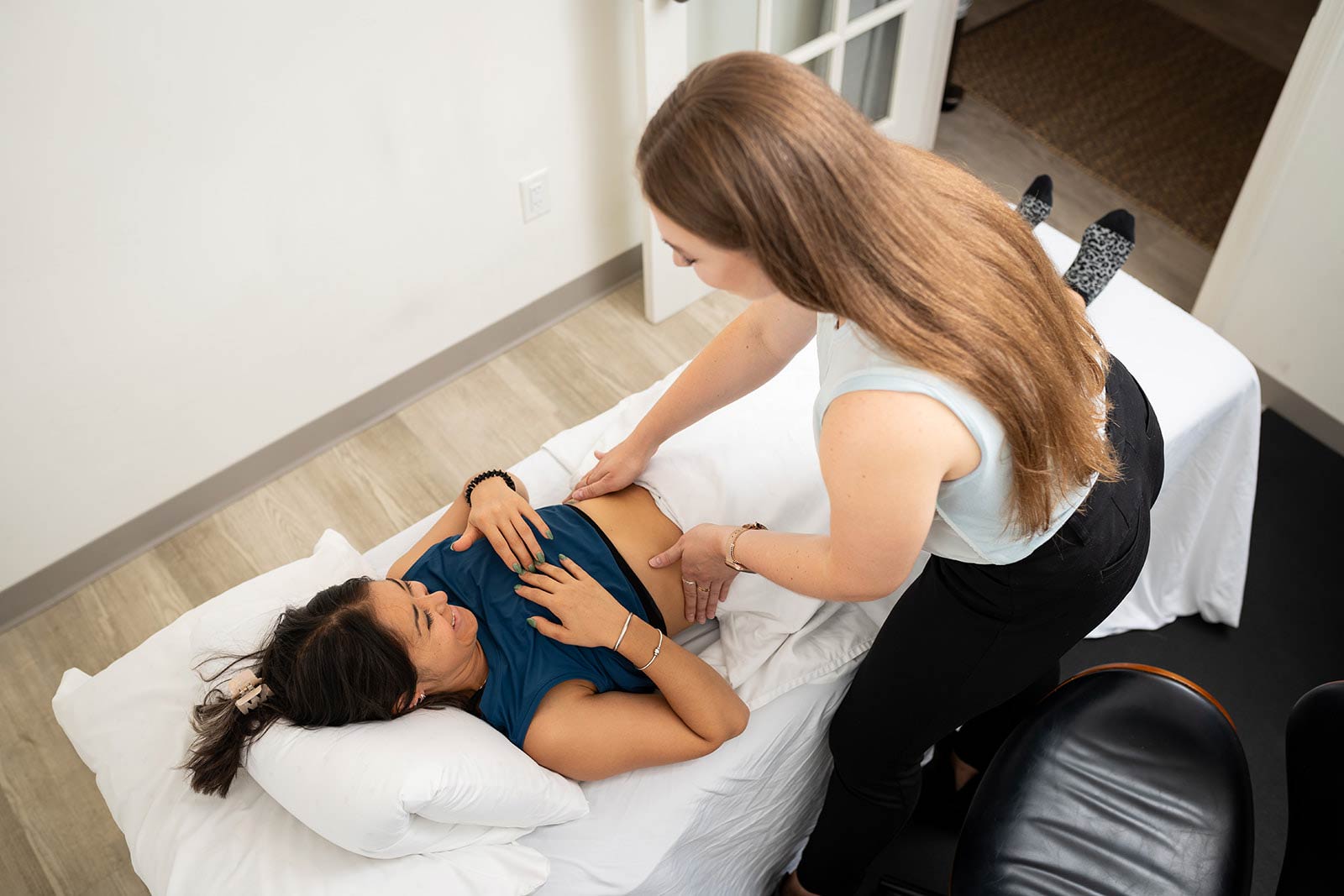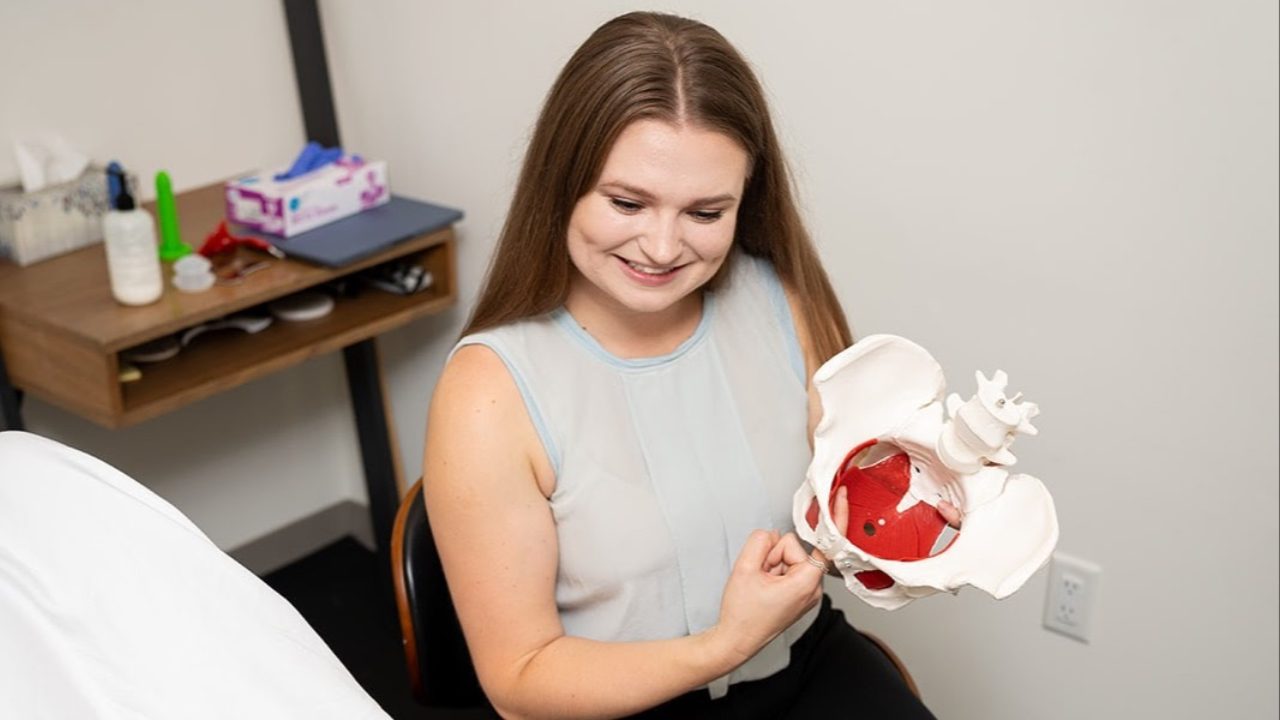Let’s set the record straight—tampon use, gynecological exams, and sex should be pain-free! But up to 28% of women experience pain before, during, or after vaginal penetration at some point in their life. In this blog, we will talk about common symptoms of pelvic pain (in female-identifying individuals), causes, and tips to help with symptoms.
Common Symptoms
Pelvic pain can present very differently in each person experiencing it. Some examples include:
- Pain or muscle spasm over the vulva or in the vaginal canal in anticipation of initial insertion
- Burning or ripping pain at the vaginal entrance with initial insertion
- The sensation of a blocked entry in the vaginal canal with initial insertion
- Pain with deep penetration
- Vulvar (external), vaginal (internal), or suprapubic (lower abdominal) pain after intercourse or climax
- Urinary symptoms resembling a urinary tract infection (such as urgency, frequency, and pain) after intercourse
Normally, there should be no pelvic pain or urinary symptoms before, during, or after vaginal penetration. But not to worry, working with a pelvic health physical therapist and employing the tips below can help you reach this goal!
Causes
All of the symptoms that I described above correspond with different sexual dysfunction and pelvic pain diagnoses. The one thing these diagnoses generally have in common is hypertonic (overactive) pelvic floor muscles.
Now, the cause of a hypertonic pelvic floor is generally multifactorial in that there is typically more than one contributing factor.
Typical culprits of pelvic floor muscle hypertonicity include:
- Poor breathing mechanics
- Decreased spine and/or hip mobility leading to surrounding muscle imbalance with disproportionate weakness in the deep stabilizing muscles of the core
- Hypermobility in the hips, leading the pelvic floor muscles to reactively tighten to provide stability to the spine and pelvis
- Upregulation of the nervous system (constantly being in fight or flight mode)
How Can a Pelvic Health Physical Therapist (PHPT) Help?
A PHPT will perform an initial evaluation that could include an internal examination of the pelvic floor muscles (click here to learn more), observation of posture, and assessment of full-body mobility and strength. Afterward, the treatment consists of 3 parts: manual therapy, therapeutic exercises, and personalized education.
1) Manual Therapy
- Internal release to overactive pelvic floor muscles, especially those that reproduce symptoms or are tender to the touch
- Release to overactive muscles around the pelvis, such as the adductors (inner thighs), lower back, abdomen, and piriformis (in the back of the hip) A lot of muscles attach to the pelvic bones and if they don’t have optimal length, then they can pull on the pelvic bones, causing the pelvic floor muscles to tighten in response- similar to a game of tug-of-war.
- Tactile cues for lengthening of the pelvic floor muscles. An overactive pelvic floor rests in a contracted or clenched position and tactile cues help facilitate the relaxation and unclenching (and therefore lengthening) of the pelvic floor to restore its full range of motion
2) Exercises
- Diaphragmatic breathing while lying down and progressing to other functional positions and movements. The diaphragm and pelvic floor move harmoniously. By practicing deep belly breaths, the pressure within the abdominal cavity is decreased, and there is less pressure on the pelvic floor muscles. Optimizing breathing mechanics helps restore the coordination between the diaphragm and the pelvic floor and helps lessen the tension in the overactive pelvic floor over time.
- Spinal and hip mobility if there is decreased mobility in either region. Since the fascia (overlying soft tissue) of the pelvic floor is near the fascia of the lower back and hips, if one of those areas has decreased mobility or tightness, it is common for the neighboring tissues to also have decreased mobility or tightness. By restoring mobility in the hips and spine, the anticipated effect is increased length in the pelvic floor and therefore less pain.
- Core and hip strengthening. It’s a common occurrence for muscles to be tight as a result of weakness as a way to provide stability to nearby joints. Focusing on decreasing tightness with mobility work alone isn’t a lasting solution, but strengthening the weak muscles is.
3) Education
- Nervous system down-regulation. Our pelvic floor muscles are very responsive to our environment. If we are stressed, then the pelvic muscles are more clenched. If we are relaxed, then the pelvic floor muscles also relax. Forms of nervous system downregulation, such as meditation, vagus nerve stimulation, yoga, and diaphragmatic breathing, help restore full body relaxation.
- Diet and hydration to manage constipation symptoms and gain awareness of bladder irritants.
- Tools to help at home, such as a pelvic wand, dilators, and the ohnut. Pelvic wands help provide a trigger point release to a specific area of pelvic floor muscles vaginally or rectally. Dilators provide a prolonged circumferential stretch to internal tissues and facilitate desensitization, which is helpful for those with pain or muscle spasms on initial insertion. The ohnut acts as a bumper to decrease the length of the penile shaft, which is helpful for those with pain during deep insertion.
What Can I Do at Home in the Meantime?
- Diaphragmatic breathing: this can be done before vaginal insertion to preemptively relax the pelvic floor muscles, if you start to feel discomfort or a gradual clenching of the muscles, or after to maintain a relaxed pelvic floor.
- Pelvic floor muscle stretches, such as happy baby or a deep squat for 30 seconds, to facilitate a muscular stretch. This can be done before or after vaginal insertion.
- Use lubrication: increased friction can feel unpleasant and result in a reflexive clenching of pelvic floor muscles.
- Experiment with different positions during intercourse: by being on top, you are in control of the rate of initial insertion and depth.
Now that you read about the symptoms of pelvic pain with vaginal insertion, how pelvic health physical therapy can help, and take-home tips to use for right now, I hope you feel empowered to pursue a path of pain-free and symptom-free vaginal insertion.
If you have any follow-up questions or are ready to meet with a pelvic health physical therapist, please reach out. I would love to hear about your story and help address your individual needs. Schedule a discovery call with me today!
You got this!
Dr. Vera






